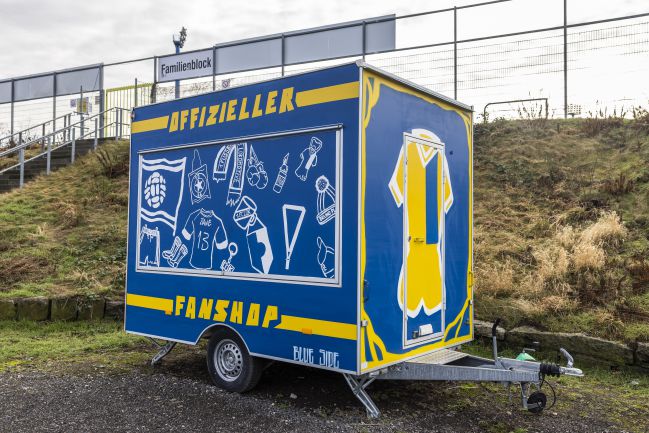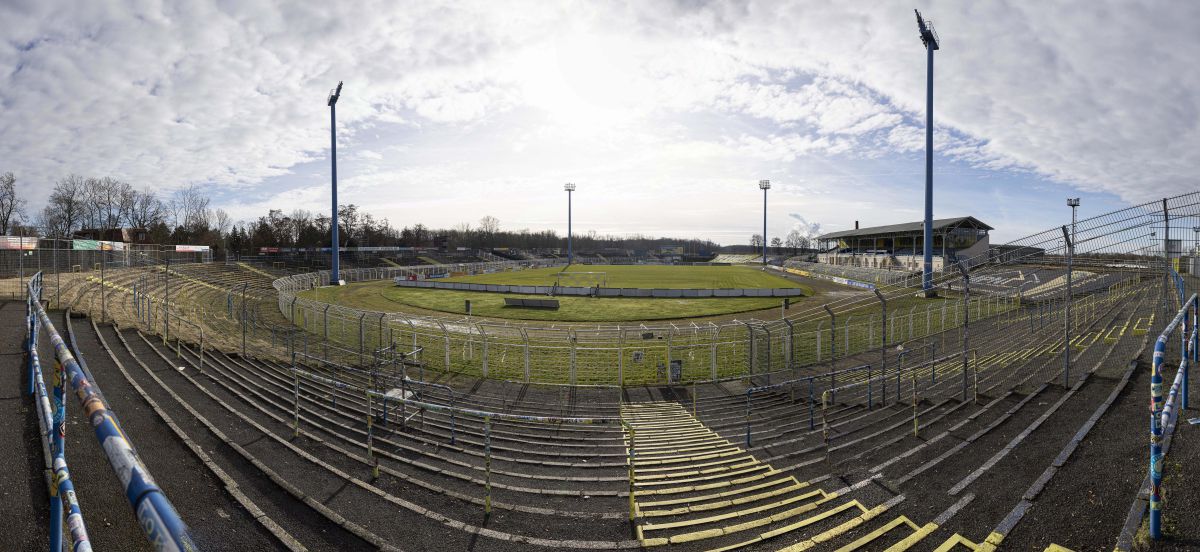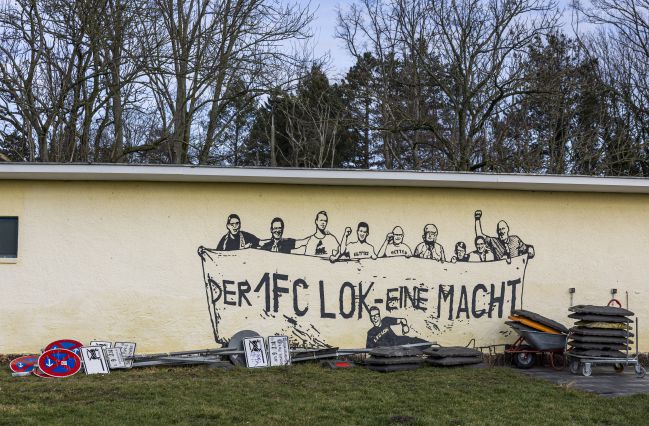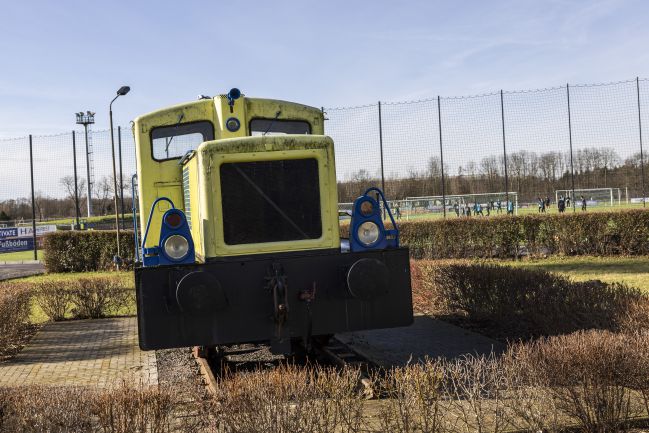By
There is another football in Leipzig that was once great and today goes undercover, swallowed by the jaws of modern football. RB Leipzig, created in 2009, steals the spotlight, but just under six kilometers from the central Leipzig Market Square, in the suburb of Probstheida, is the Bruno-Plache stadium, with a capacity for less than 11,000. fans and hosts the matches of 1. FC Lokomotive Leipzig, a historic player from the GDR (German Democratic Republic, the communist section of the country after World War II) which today passes through the Regionalliga Nordost, the fourth German division.
Matthias Löffler, member of the club’s Supervisory Board and author of ‘The German Football Book of the Year 2019’, where he dissects the history of the team he loves, tells AS about the beginnings of what would be, in 1903, the first German national champion in the tournament that preceded the current Bundesliga, in addition to having been involved in the birth of the German Football Federation (DFB, for its acronym in German): “Johannes Kirmse was one of the 17-year-old boys who was in the Zum Mariengarten restaurant in Leipzig where the DFB was created on January 28, 1900; He had already created the Sportbrüder Leipzig in 1893, considered the origin of the current Lokomotive. Theodor Schöffler, who had created VfB Leipzig in 1896, was also at that meeting. Both clubs united in 1898 to become one, VfB Sportbrüder, which in 1900 was renamed VfB Leipzig.

Enlarge
The Lokomotive Leipzig store.
JAVIER GANDUL
The history of the club, with its different names, has been full of difficulties. The first, after the Second World War, when the clubs were dissolved by the Allies, “although in practice it only took place in the area occupied by the Soviets”, recalls Löffler. In 1946 the members of the dissolved VfB Leipzig created SG Probstheida, which later merged with other clubs to end up integrated into the Oberliga of the GDR. And in 1966 the GDR locomotives became the main ‘sponsor’, so the team was renamed Lokomotive Leipzig. A mural of a locomotive today adorns the main entrance of the Bruno-Plache and a model of another is found in the area adjacent to it., where fans gather before and after each game. It exudes humility from every side: the club store is a towable stand no larger than a fairground. The stadium was inaugurated in 1922 and in its splendor it housed 40,000 fans. Today it has a new stand and the rest, the majority of the capacity, is made up of stands that are not very accessible to the fan who wants to sit and are invaded by vegetation.

Lokomotive came close, but was never able to win the GDR title, although it did win several cups, and its time in Europe was notable: in 1966-67 it beat Eusebio’s Benfica in the Fairs Cup; In the 1973-74 UEFA Cup they reached the semi-finals, where they lost to Tottenham; In the 1982 Cup Winners’ Cup they beat Barcelona at the Camp Nou by 1-2although they had lost the first leg 0-3; and in 1986-87 they reached the final, losing to Ajax led by Cruyff and with Rijkaard, Van Basten and Bergkamp in their ranks. German reunification sank the performance of the club, which recovered the name VfB Leipzig, and began to lose categories until, in 2004, it fell into bankruptcy and was dissolved. But that same year a group of fans relaunched it, and until today.
As was easy to imagine, coexistence with RB Leipzig is complicated, although the enormous difference in categories prevents a head-on collision. Lokomotive today is a shadow of past glories, but its fans prefer history to current success on the back of a foreign brand like Red Bull. “It is a symbol of modern football that has never interested me. Companies buying clubs, nations trying to wash their face with sport, like Newcastle, PSG or City… There is no longer a connection between the fans and the product, as they would say. RB Leipzig is just another example. It doesn’t really bother me, it just When I refer to football I think of something totally different than what the average RB Leipzig fan thinks. There are cheering stands that continue to protest in the Bundesliga every time they play against them,” explains Löffler.

Enlarge
Mural in the club facilities.
JAVIER GANDUL
Among the many born in the city there is one who today, things in life, has changed sides: Marco Rose, coach of RB Leipzig. There he played, in the quarry and also in his first years as a professional, and at Lokomotive he had his first experience on the bench as head coach. Although today he defends colors that cause rejection among his former fans, Löffler does not hold any grudges: “Rose is a ‘Lok’ child. She has to earn money in modern football, I do not reserve any negative feelings for her.”

Enlarge
Lokomotive Leipzig training.
JAVIER GANDUL
In the fourth division, there is no room for large investments and unforeseen events take their toll: AS intends to attend the league duel between Lokomotive and Jena, but the rains of the previous day force its cancellation due to the poor condition of the grass. On the horizon, Madrid’s visit to RB Leipzig lights up the city, but Löffler is not interested: “My team is ‘Lok’ and our rival is BSG Chemie. But I wouldn’t care if Madrid wins…
The German football scene after reunification in 1990 leaves a gloomy outlook if you are a fan of a team from the former German Democratic Republic (GDR): Only two of the 18 clubs that make up the current Bundesliga are from the communist zone, and with reservations. “I would only count Union Berlin as a GDR club, RB is a club owned by an Austrian company that only happens to play in Leipzig,” says Löffler.

Enlarge
A locomotive inside the club facilities.
JAVIER GANDUL
What happened to the Oberliga greats after the fall of the Berlin Wall? Most of them still exist, an unequivocal sign of their local roots and their power of attraction, but none of them move close to the highest level. Dinamo Berlin, which won its ten titles in a row, is today a partner of Lokomotive in the Nordost group fourth division, also together with BSG Chemie (two titles), the former Turbine Erfurt (two) and Jena (three). Dinamo Dresden, winner of eight titles and eight other runners-up finishes, is doing somewhat better: they play third, in the 3. Bundesligalike Chemnitzer, former Karl Marx-Stadt, champion in 1967. And it is Magdeburg (three titles) and Hansa Rostock (one) that are holding up best: both play in the second division, just one step away from the Bundesliga, although without real options to advance this course.
It is evident that football talent flourished more freely in the Federal Republic of Germany (FRG), where Bayern led the German stampedes in Europe. But such a difference is still surprising. Löffler does not attribute it to just one thing, but to many: “There are several reasons, everything turned around after the fall of the wall in 1989. The system collapsed. People didn’t trust the West Germans and there was a certain innocence. In football it was a mixture of my own mistakes, lack of knowledge and taking bad advice.” The problem, in any case, is above all economic, since the money has allowed RB Leipzig to prosper from scratch: “All the companies that had left East Germany after the war or that had been disbanded did not return. There was no economic structure, and there still isn’t one today.”
